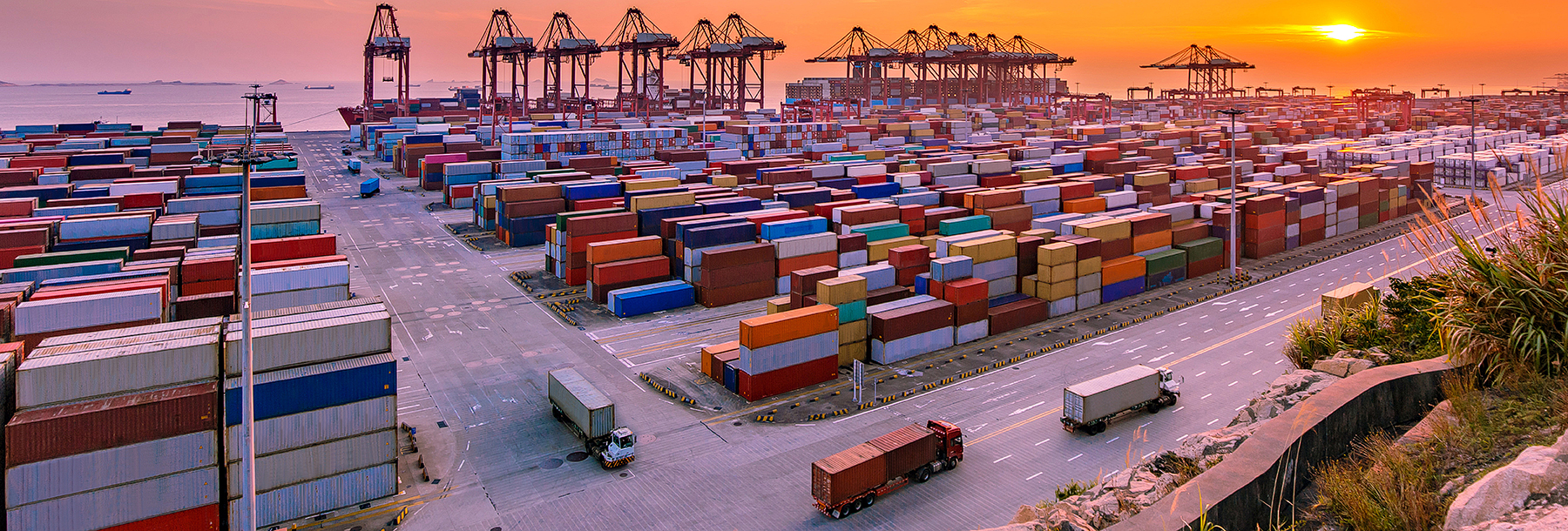TCU Neeley Executive in Residence Bets Lillo shares her insights in an op-ed for MarketWatch, explaining how businesses will shift their suppliers and come out stronger.
January 11, 2022
By Bets Lillo
 “Supply chain” seems to be a stock answer to everything that’s wrong with the world these days. That’s because supply chain is shorthand for how the world is connected — from idea to product to consumer.
“Supply chain” seems to be a stock answer to everything that’s wrong with the world these days. That’s because supply chain is shorthand for how the world is connected — from idea to product to consumer.
This supply-chain disaster is real. Thank goodness.
Human psychology, along with all those systems we designed, recognizes meaningful alerts when they’re persistent and personal.
Then what? Then we can channel our attention into fixing those problems. Here’s how we can do it.
Move from cost-optimized supply chains to regional networks
Getting goods from Asia is tough these days. Never mind the container ships waiting to get into the ports of Los Angeles and Long Beach, or the truckers queued up for containers to be unloaded in the yard. Tariffs and rolling manufacturing stoppages for government energy rationing have added cost and uncertainty to shipments from China. Countries in South Asia have struggled to fill the gap as waves of workers have been infected with COVID.
Dating back to Deloitte’s 2016 Manufacturing Competitiveness Index, the increased importance of technology was projected to tilt manufacturing away from low-labor-cost countries in favor of locations with digital-savvy workforces. COVID has accelerated digital adoption.
COVID has also rewarded companies with alternatives built into their supply networks. Air transportation was a costly substitute for water, as a U.S. company learned in 2021 when it needed to get fiberglass bath enclosures from Asian manufacturing locations to building and remodeling customers in the U.S. In contrast, a consumer products company found the combination of wage rates in Mexico and digital skills to support manufacturing in the U.S. and Canada allowed it to restructure production to supply the Americas market while keeping costs in line. It also toggled across a range of land and water transportation options to optimize product finishing, packaging and storage alternatives.
In the future, expect companies to rely more on suppliers in nearby low-cost countries and to explore shorter and more flexible transportation options as they seek to reduce both risks and costs. Companies are also changing the way they work together. Aviat Networks, a communications technology company, outsourced its manufacturing to a supplier with a footprint on multiple continents. Over the last several years, this flexible partnership enabled movement of supply in response to extreme weather, imposition of tariffs and labor supply dynamics.
Expect buyers and suppliers to increasingly partner across physical and digital expertise to more seamlessly serve markets, moving away from high-volume, low-cost supply contracts with restrictive terms.
Moving from low-cost suppliers to regional partner networks has another benefit: it’s environmentally friendly. Yale Climate Connections reported in August that international shipping is responsible for 3% of global greenhouse gasses – that’s more than airplanes. Moves to regional supply networks let companies switch between trucks, rail and shorter on-water transport.
With up to 85% of a company’s environmental impact in its supply chain, companies are responding to investor interest in ESG by tracking the impact of their suppliers and customers as part of their environmental posture.
Logitech International announced on Sept. 9 that it is adopting a climate-positive approach, addressing its carbon footprint across their entire value chain, including indirect emissions. The goal is to achieve carbon neutrality this year, to set the company on a path to net zero emissions by 2030, and beyond that, to be climate positive.
Businesses elevate supply-chain oversight
Looking back to March 2020, Accenture reported that 71% of companies it surveyed didn’t have business operations contingency plans beyond three weeks long. It took a global pandemic to show us the problems with the tightly tuned connections across our worldwide manufacturing infrastructure.
Our integrated, cost-optimized supply chains worked so well that management of these business-critical activities could be two levels down from the CEO, and well out of sight of the boardroom.
The supply-chain drama and business disruption of the pandemic has shown boards that understanding supply chain is integral to monitoring enterprise risk. Boards have begun to include supply-chain expertise as well as cybersecurity and digital transformation in their modern recruitment matrices. Audit and Risk committees are working supply chain into their review cycles.
But a board’s oversight of supply chain is more than risk reduction for the transformation of goods from components of production to customer value. Supply chains offer valuable business insights – from the levers on a firm’s profitability to the needs of its customers.
As options for sensor, camera and IoT data become increasingly available, supply chain’s integrative information about a business rises above management’s functional key performance indicators (KPIs). With increasingly granular, transparent and timely information on the cost elements of serving different customer segments, boards’ Compensation and Human Capital committees will consider how to encourage rapid communication across a company’s sales, marketing, production and logistic domains as well as performance incentives within them. Strategic plan reviews will incorporate the integrative data from a company’s supply chain, as boards reconsider implications on topics from technology to talent management.
Read the full op-ed on MarketWatch here.


